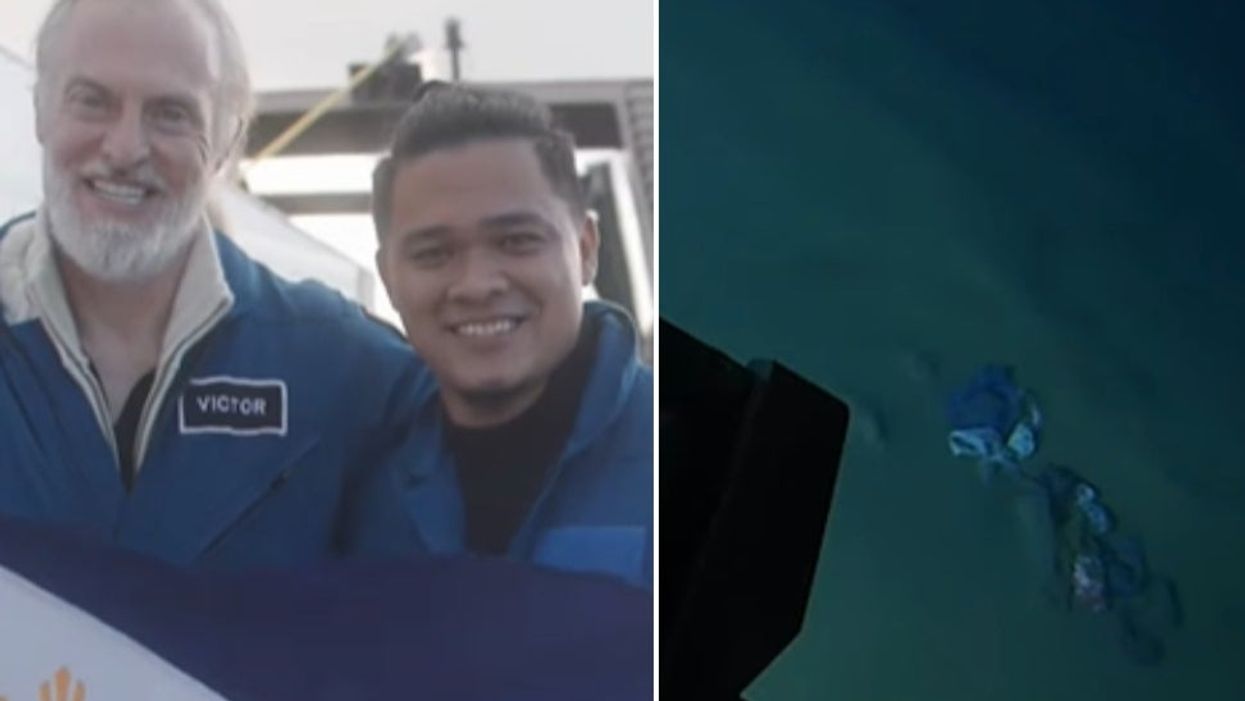Science & Tech
Sinead Butler
May 31, 2021

(Left) Victor Vescovo and Dr. Deo Florence Onda (right) the plastic debris found in the Philippine Trench
YouTube/Caladan Oceanic
Scientists have reached the bottom of the third-deepest ocean trench on Earth for the first time - and found that plastic has even managed to pollute these depths.
Back in March, Oceanographer Dr Deo Florence Onda from University of the Philippines’ Marine Science Institute, embarked on the journey to the bottom of the Philippine Trench with Victor Vescovo, an American explorer from undersea technology company Caladan Oceanic.
Dr Ona told Channel News Asia (CNA): “It was an opportunity for us to see what’s happening down there, which has never been seen before.”
The pair became the first humans to reach the bottom - some 35,000 feet below the surface - and were able to explore one of the world’s oldest seabeds for 12 hours.
What they discovered in the depths of the seabed took them by surprise.
Dr Onda said: “There was one funny scene when we were exploring the area. There was white material floating around. I was saying, ‘Victor, that’s a jellyfish.’ We went there and approached, and it was just plastic.”
DSV Limiting Factor is back on the surface! In the photo are Dr. Deo Florence Onda @savedeocean and Mr. Victor V… https://t.co/nvVWgdmr1s— UP Marine Science Institute (@UP Marine Science Institute) 1616497124
Sadly, that means plastic pollution has been able to reach even the deepest corners of the world.
But perhaps this shouldn’t come as a surprise as approximately 8 million pieces of plastic pollution find their way into our oceans every day.
According to Surfers Against Sewage, 12 million tonnes of plastic are also poured into the ocean every year and plastics consistently make up 80% of all marine debris studied.
“There was a lot of garbage in the trench. There were a lot of plastics, a pair of pants, a shirt, a teddy bear, packaging and a lot of plastic bags. Even me, I did not expect that, and I do research on plastics.”
Dr Ona explained how he felt being one of the first ever humans to see this part of the Earth, but also sadly seeing the extent of plastic pollution.
“Seeing it for the first time was a privilege as a human being, representing 106 million Filipinos and billions of people of the world. But being a witness to the extent of pollution, and being a witness to the gravity of the plastics problem from the surface to the bottom of the ocean, is another thing.
“It becomes my responsibility to tell people that their garbage doesn’t stay where they put it. It goes somewhere else and it will sink.”
Top 100
The Conversation (0)













